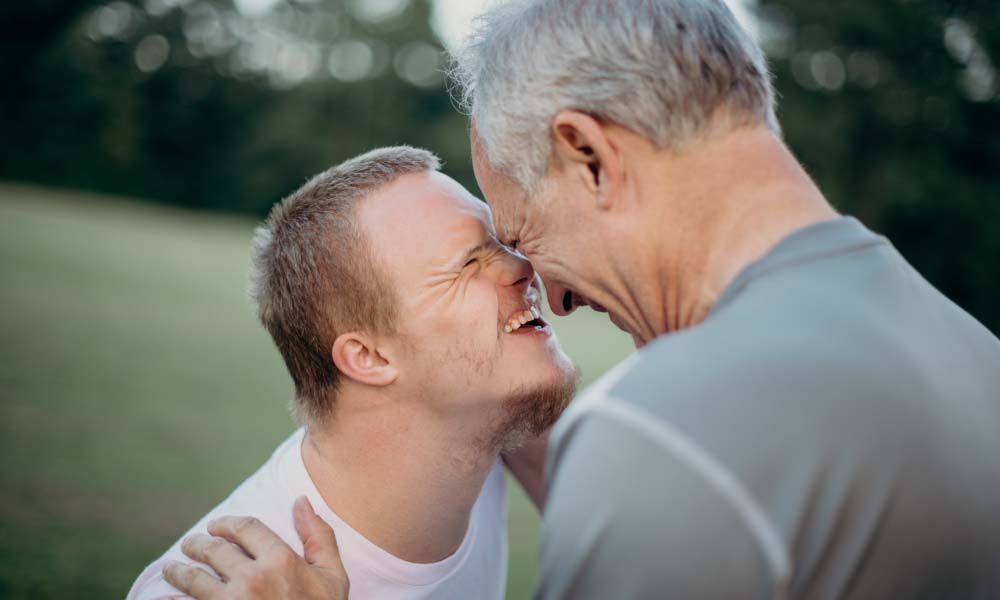- Allows you to give your kids accurate information
- Lets your kids know you are a safe person to talk to about sex and their body
- Helps prevent sexual abuse
While young children don’t necessarily need to know about sex, it’s important that parents talk to them early and often about sexuality – starting with honest answers to their questions about their bodies. One study shows that preschoolers demonstrate greater success learning the names of their genitals when the information is presented by a parent, versus a teacher. If you’re not sure what to say or how to say it, here are two simple points to keep in mind.
Be comfortable talking (and listening)
According to Sandy Wurtele, Ph.D., and Feather Berkower, M.S.W., authors of “Off Limits: A Parent’s Guide to Keeping Kids Safe from Sexual Abuse”, it’s best to talk to kids about their bodies and sex often, honestly, and briefly. For example, if your preschooler asks how babies are made, instead of asking why he wants to know, respond with a straightforward, age-appropriate answer. They also emphasize the importance of responding positively to kids’ questions. If, for example, your child says she doesn’t like the nanny, instead of saying “The nanny loves you!” and discouraging her from saying unkind things about the nanny, Wurtele and Berkower ask parents not to shut the conversation down. Instead, parents should express curiosity and ask follow-up questions, which may shed more light on the situation. For example: Child: I don’t like the nanny. Parent: Why not? Child: Because she’s not nice. Parent: What did she do that was was not nice? Child: She touched my vulva and told me not to tell you. Parent: I wish that hadn’t happened, but I’m so glad you told me. If you are not comfortable talking about sex with your kids, know that you can change. Wurtele and Berkower recommend practicing with another adult, such as a partner or a friend. Janet Rosenzweig, author of “The Sex-Wise Parent”, suggests role-playing the hypothetical conversation you might have with your child. While you should be open to any of your child’s questions, you do not have to give a biology lesson in answer. For example, when your preschooler asks you how a baby is born, a sufficient answer might sound like this: “Usually the baby comes out through the mom’s vagina, or sometimes a doctor makes a cut in the mom’s belly to take the baby out through her belly.” If your child has follow-up questions, answer them honestly. But remember, you don’t have to give them a lot of information at once.
Use anatomical terms
From the day my daughter was born, I talked through diaper changes, explaining, “I need to get your vulva totally clean” in the same matter-of-fact way I spoke while getting her dressed. “First your right arm goes in the right sleeve. Now the left arm…” According to Berkower and Wurtele it is imperative that parents use the appropriate anatomical terms when talking about the genitals. This communicates that there is nothing shameful about our kids’ bodies. Rosenzweig cautions parents not to “skip from the knees to the belly button when naming the body parts.” When a kid uses the correct terms with a sexual predator, it is a signal that this child talks openly with an adult about his body and is not likely to keep abuse a secret, say Berkower and Wurtele. Skyler recommends telling kids what their body parts are, where they are, and what they do. For example, if a boy asks what his penis is for, you can simply tell him, “Your penis is for urinating.” You don’t have to say more that, unless your child asks. If he follows up with a question like, “Why does it feel good when I touch my penis?” don’t panic. This doesn’t mean he’s asking you to explain the mechanics of sex. You can say something like, “Our body is built to enjoy touch, and certain body parts, like your penis, feel better to touch than other parts.” Although girls’ genitals are harder to see, that doesn’t mean you shouldn’t discuss them. Generally, according to Skyler, it’s enough to start by telling preschool age girls, “You have different holes for different things. One is for pee, one is where a baby comes out, and one is for poop.” If your daughter expresses curiosity in learning which hole is which, Skyler suggests explaining things with the help of pictures, or even while sitting on the floor with a mirror, if you’re comfortable. It is enough to say, “Your urethra is where your pee comes out. Your vagina is the hole a baby comes out. Your anus is where your poop comes out.” Similarly, while you can’t necessarily see the clitoris, when your daughter touches hers or asks about it, consider it a teachable moment, beginning by simply telling her what it’s called. Skyler emphasized the importance of giving children information about their bodies in “bite-size” chunks, early and often, and that these conversations be “non-events.” In other words, do your best to treat your kids’ questions about their bodies as you would their questions about where clouds come from, or why they have to take a bath – honestly and comfortably, using age appropriate explanations that aren’t too detailed. Of note, in the Netherlands, where parents commonly have these types of casual, age-appropriate conversations, the rate of teen pregnancy is far lower than it is here in the United States. If you’re like me, the parent of preschooler and a toddler, worries like head lice, swimming pools, and trampolines take precedence over the prospects of sexual abuse, STDs, unwanted pregnancy, and rape. But the best way to deal with big-kid problems is to start early, when with the little-kid questions arise. Think of it as beginning to wade into a heated pool now, rather than going head first off the high dive into freezing water later.
Additional Resources
For Parents of Children Ages 0-18
Off Limits: A Parent’s Guide to Keeping Kids Safe from Sexual Abuse
by Sandy K. Wurtele, Ph.D. and Feather Berkower, MSW
Children Preschool to 2nd Grade
What Makes a Baby
by Cory Silverberg and Fiona Smythe
For Children (Kindergarten to Third Grade)
It’s Not the Stork: A Book About Girls, Boys, Babies, Bodies, Families, and Friends
By Robbie H. Harris



